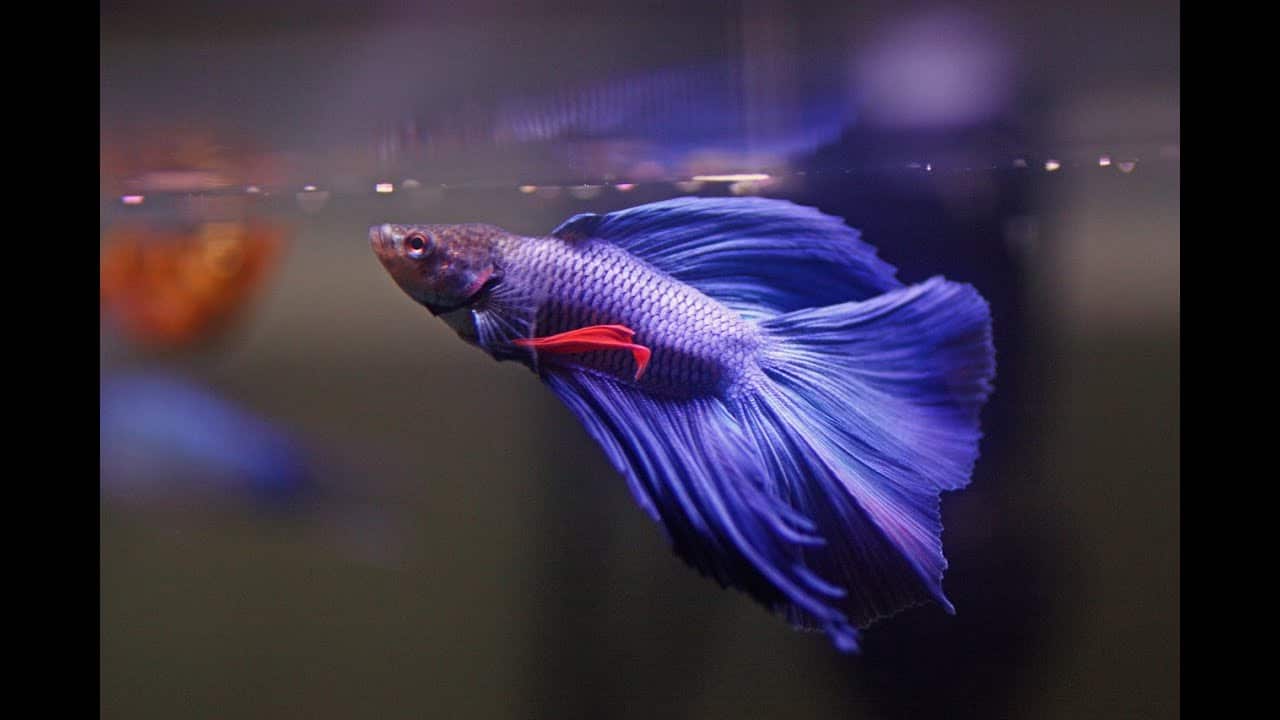The beta fish is a special protagonist of aquariums, due to its particular characteristics. It is distinguished by its territoriality and aggressiveness, as well as its large tail and showy fins. For this reason, in addition to its name of beta spenders, it is also known as a Siamese fighter or fighter.

Normally he should inhabit a large aquarium by himself, or perhaps with several females, not one, and due to his personality, it is best to know him in some detail before acquiring one, so that it lasts us in good health even up to five years. Years. Its maintenance is not expensive, but on the other hand, its reproduction is a delicate process that implies following specific steps to get to have beta fish fry. Here we give you instructions so that taking care of your beta fish is easy and he is happy, as much as to make bubble nests, something that will surprise you.
What do you need to take care of a beta fish?
- a beta fish
- An aquarium of at least 20 liters
- Water conditioner-DE chlorinator
- Beta fish food -high protein content-
- Water filter, better than sponge
- A cup to handle the fish -better than nets-
- rounded stones and sand for the background
- Natural plants
- heater with thermostat
Instructions for caring for a beta fish
- Choice of fish. When buying the fish, you must observe its condition and make sure that it is in the best conditions. The fins should not have any scratches or breaks, and the eyes should appear healthy. You will not have lumps on your body, which are a sign of parasites. It doesn’t matter that the beta fish seems very docile in the store, it does not mean that it is less receptive or less aggressive than its nature, it may just be resting other than that it is used to being seen by many people.
- Condition the aquarium. In principle, the aquarium should be for a single beta fish. It is a fish that needs space, not so much in depth -it does not need a very high aquarium- but in volume, at least 20 liters, so that it does not die before its time. It is a warm water fish, and the temperature should be between 25º and 30º, so you should install a heater with a thermostat, and in winter it is advisable to have it near a heat source. Before introducing the fish, you must prepare the water (taken from the tap, not mineral or distilled) with a specific conditioner for these animals, which, on the one hand, will eliminate chlorine and heavy metals and, on the other, the bacteria that are harmful to their health.
- Filter and oxygenator. The water filter is necessary to clean it and maintain the bacterial balance of the aquarium, but you must ensure that it does not form currents, because these affect the correct development of long-finned fish such as betas. The best is a sponge filter. As for the oxygenation of the water, it is not necessary because beta fish are able to breathe from the air, so you will see that they approach the surface of the water, just as they oxygenate in the water.
- Rocks and plants. You should avoid decorating the aquarium with rocks or sharp or pointed items, as these can tear the fish’s fins. Similarly, it is not convenient to put plastic plants, for the same reason. You can do a test with a nylon stocking to see if the object is harmful or not. Check every day that your beta fish has fins without tears.
- Food. The beta fish is a carnivorous animal, and the ideal is to eat live foods, such as worms or larvae, but it is safer to give them frozen or dried, such as brine shrimp or red worms. The important thing is that your diet contains at least 40% protein. Flakes for tropical fish, goldfish and the like are not good for betas. You should not feed it in excess, because most will eat all the food you put in it, but it will be dangerous for their health.
- Cleaning. To clean the tank put your beta fish in a container of old water while you clean it. Wash the aquarium with hot water, do not use soaps or bleach because they are very harmful to fish. Also rinse the stones or decorative elements. Once clean, fill it halfway with tap water and add a water conditioner that DE chlorinates it and allows it to be in the best conditions. Finish filling it with the old water, and make sure that both waters are at the same temperature, using a thermometer and the heater. You should also weekly evaluate the quality and pH of the water with a specific kit and write down the measurements.
Tips for caring for a beta fish
- Fill the tank to 80% capacity if it doesn’t have a lid, to prevent your fish from jumping out. It can jump up to 7.5 cm above the water.
- The beta fish is very aggressive towards other fish, although the females can support some quiet fish, dull in color and smaller in size, freshwater mussels and snails.
- If you want to pet the fish, apart from the fact that if you do it roughly you will stress it and shorten its life, you should keep in mind that you could remove a layer of slime that protects them from diseases.
- Placing a mirror on one side of the tank will make your beta fish think they have a rival and will stress them out and cause them to react aggressively.















